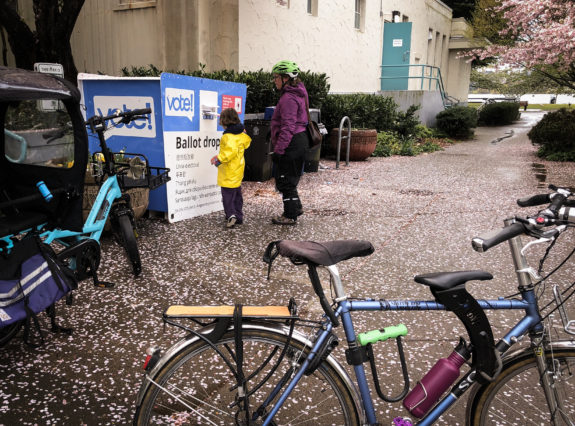
Alright, folks, let’s do this. This is the big one for a lot of reasons, but for biking in Seattle specifically this is the most important ballot of the entire decade. We need to vote NO on Initiative 2117 and vote YES on Seattle Proposition 1. If we want to make our streets safer, connect our bike network to every neighborhood, expand and maintain our regional trail network, and accellerate our dismal rate of sidewalk construction, it’s all on the line. Tell all your friends and family members how much these measures mean to you and to our communities. And if you aren’t already spending your time volunteering to get out the vote in swing states, consider joining the Keep Seattle Moving campaign.
It seems that a lot of people have heard the message that voters should say NO to all the state initiatives, and the endorsements below agree. But we need to make sure folks know to vote YES on the proposition. I may lose sleep worrying that people will group the proposition in with the initiatives and just vote no on them all.
Your ballot for the November 5 general election should have arrived in the mail, or should arrive very soon. Eligible voters have until October 28 to register or update your address online in King County. After that date, voters can still register in person up to and including election day at a voting center. If you are not in King County, check your county’s voter information pages for details.
I have gathered endorsements from several organizations working for safer streets and better transit in our area: The Urbanist (URB), Transportation for Washington (T4W), Washington Bikes (WAB), and the Transit Riders Union (TRU). Check the endorsements pages for each organization for more information on why they chose who they chose (the Urbanist did a particularly good job of explaining their reasoning this year). If an organization did not mention a race, then I left them off the list. But if they specifically noted “no endorsement,” I did include that. Note that Cascade Bicycle Club and Transportation Choices Coalition are 501(c)(3) non-profits that can accept tax-deductible donations, and U.S. law allows them to endorse ballot measures but not political candidates or parties. Their respective sister organizations Washington Bikes and Transportation for Washington are separate 501(c)(4) non-profits that can endorse candidates.
Seattle City Government
Seattle Proposition No. 1: Yes (URB, T4W, WAB, TRU, Cascade Bicycle Club, Transportation Choices Coalition)
Seattle City Council 8: Alexis Mercedes Rinck (URB, T4W, WAB, TRU)












